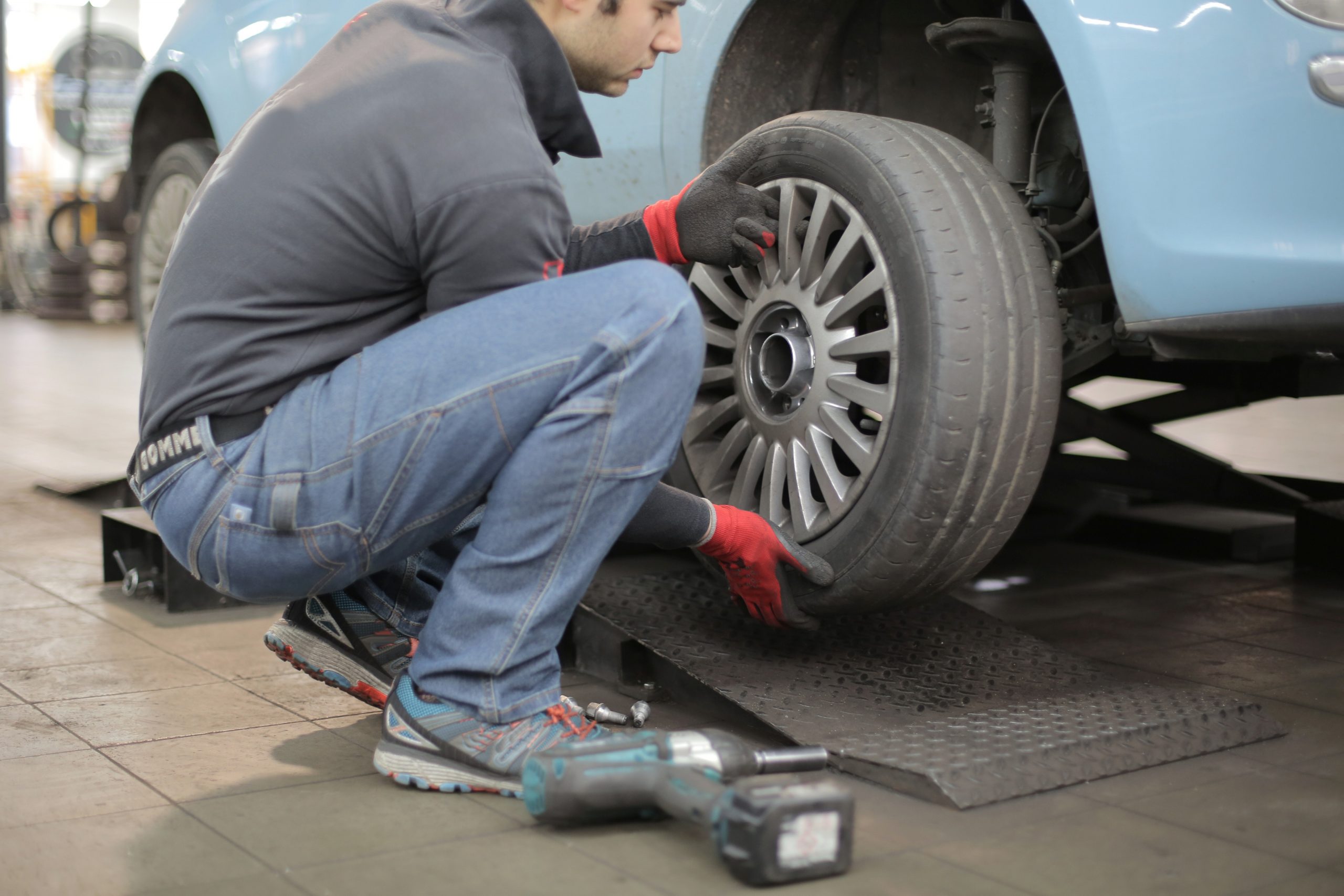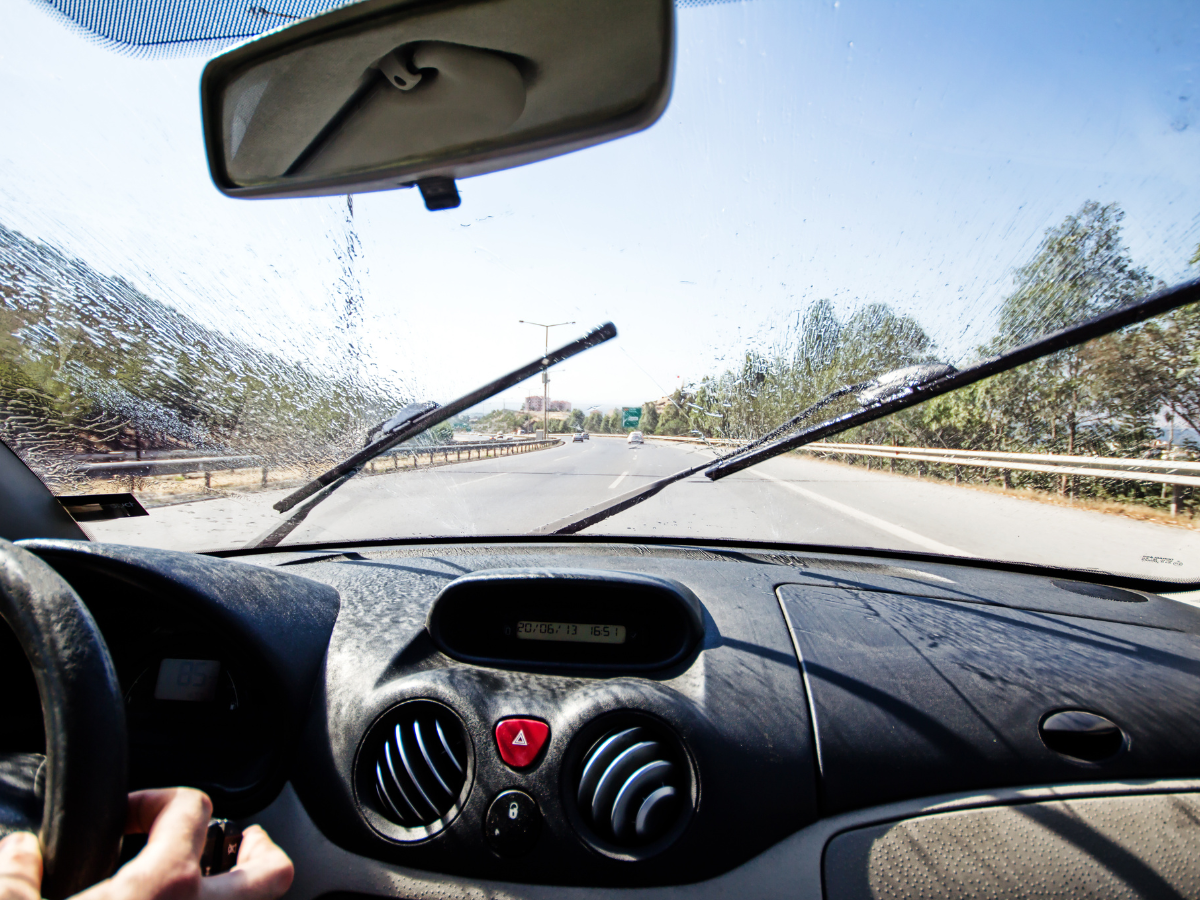You’re headed to work on a beautiful Monday morning. As a thoughtful driver and car owner, you regularly check your tires before leaving to make sure everything is in tip-top shape. As you’re checking, you notice that one of your tires has a large protrusion on the side—what looks like a nub full of air poking out the side of your tire. Uh oh, now what?
This protrusion is an air bubble in your sidewall. Air bubbles are fairly common occurrences with tires, and while they may not seem as bad as a flat tire, they’re no less detrimental. In other words, you’ll want to address it as soon as you possibly can.
The Causes of Tire Bubbles
Tires are made up of multiple levels of ply and rubber held together by glue. Occasionally, these layers become separated and air can seep into them, causing air bubbles to form. But what causes the layers to be separated in the first place?
In short, damage to the integrity of the tire causes the layers to come loose, which then allows air to seep in and form air bubbles. You can damage your tires from driving on them with the incorrect amount of pressure or from driving on less than stellar roads. Potholes and construction areas where there’s excess debris such as nails and rocks can damage your tires and cause air bubbles. Driving too fast over speed bumps or railroad tracks can do the same.
It’s also worth noting that, on occasion, air bubbles in tires can form from manufacturing defects. If the tires weren’t manufactured correctly or insufficient materials were used, the likelihood of a tire bulge increases.
All in all, impact on your tire from driving over foreign objects causes pinching against the rim, which damages the inner layers and forces air into your tire. And this is when air bubbles start to form. In most cases, it’s accurate to say that poor road conditions and incorrect tire pressure are the main culprits of air bubbles.
Tire Bubbles and Safety
Tire bulges can look rather unimposing. Often times they’re no bigger than a piece of candy, and they usually don’t have any visible effect on the tire’s air pressure. But in this case, looks can be deceiving.
As discussed, a bubble in your tire is a tell-tale sign that your tire’s structural integrity has failed. There are no two ways about it: If you keep driving with an air bubble in your sidewall, you will experience a blowout. Not only can a blowout destroy your tire, but it could cause further damage to your vehicle too.
Worse still, it could cause harm to yourself and others if you happen to have a blowout in heavy traffic or going at high speeds. The National Highway Traffic Safety Administration estimates that over 10,000 crashes occur every year from tire failure. When looked at through this lens, spotting an air bubble is actually a blessing—it gives you the opportunity to fix the problem before it turns into something much worse.
What to Do If You Have a Tire Bubble
Generally, you shouldn’t drive with a tire bubble, regardless of how small it is. The more you drive with a bubble on your tire, the more air will seep into it, and the larger it will get. Eventually, the rubber will fail and it will cause a blowout.
If you’re parked somewhere safe and you have a spare tire, the best option is to change the tire immediately. If you have roadside assistance, you can also call to have your car towed to a repair shop. If neither of these is an option, however, and you have no choice but to drive, be sure to drive very slowly, stay out of busy traffic and make it your first priority to get to a repair shop as quickly as possible.
Unfortunately, there’s no easy way to fix a tire bubble. As mentioned, a bubble is an indication that your tire’s structure has failed, and the entire tire will need to be replaced. Depending on your tire’s warranty, you may be able to get the manufacturer to replace it for you, but that also depends on whether the damage was caused by poor road conditions or impact on the tire. Most warranties won’t cover these kinds of things—they’ll only replace your tire if a bubble formed from normal driving conditions. You can have the tire shop check for rubber shavings inside the tire to determine whether the bubble was caused by road hazards or impacts.
Preventing Tire Bubbles
There are a few things you can do to offset the chances of bubbles occurring. Do your best to avoid potholes and road conditions that could damage your tires. If possible, take routes that don’t put you close to construction areas as these places often have rocks and other debris that can damage your tires.
You’ll also want to monitor your tire health regularly. If you drive frequently, giving your tires a walk around every day before driving is good practice. Another good idea is to give them a closer inspection and to check your tire pressure once a week, or perhaps every time you fill up your gas tank. It’s important to not rely completely on your vehicle’s gauges because sometimes, these won’t pick up on certain problems with your tires that could cause more damage later.
Lastly, one of the easiest ways to check all the boxes is sign up for a monthly tire subscription like Treads. Not only does treads help you swap and store tires from the comfort of your home, we send you friendly reminders to help upkeep your tire’s health and safety.
Conclusion
Air bubbles are an indication of critical tire failure, and they’re something you don’t want to ignore. Be sure to take your car or tire to a shop to have it replaced as soon as possible.
Finding a bubble in your tire is a headache. It means you’re out the time and money it takes to have the whole tire replaced. But be sure to look at the bright side too—finding that bubble and addressing it immediately means you won’t experience a blowout, which could cause harm to your car, or worse, you and your family. And that’s undoubtedly great news.





